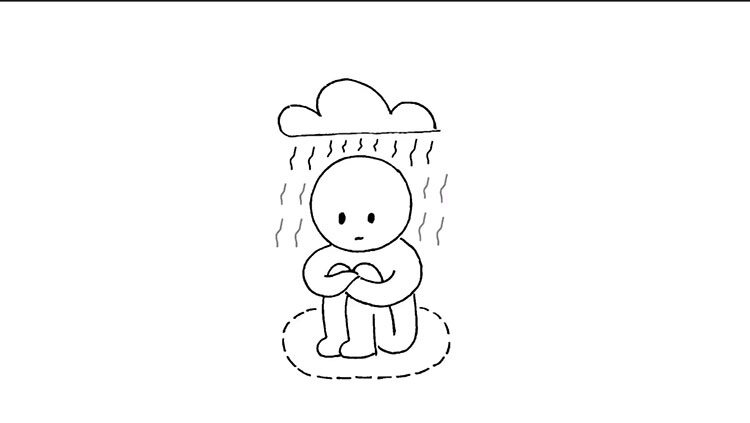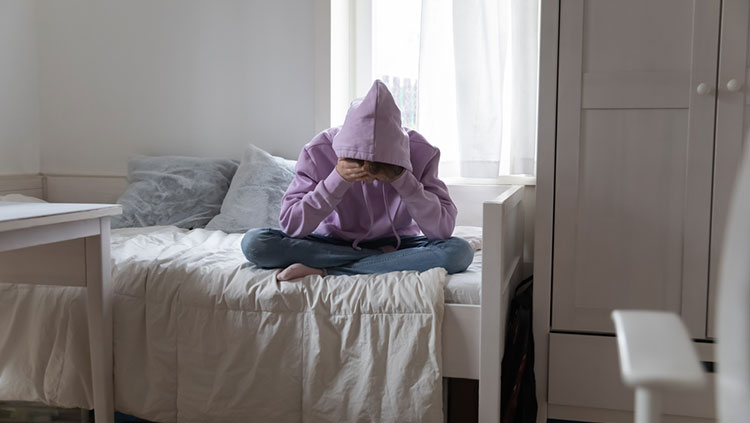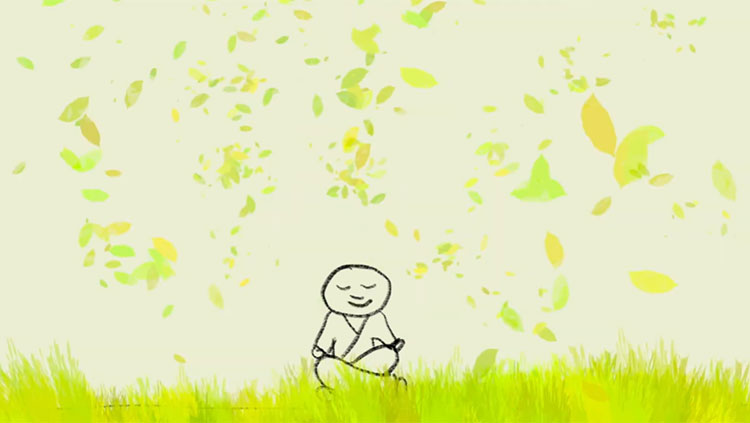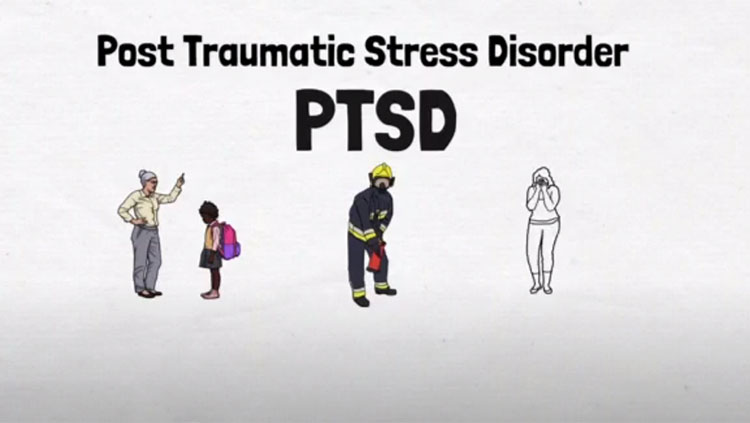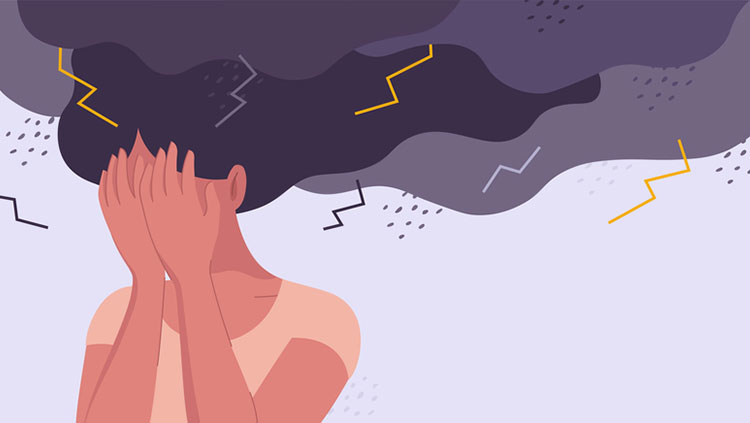Disconnected: What’s Happening in the Lonely Brain
- Published19 Sep 2024
- Author Bella Isaacs-Thomas
- Source BrainFacts/SfN
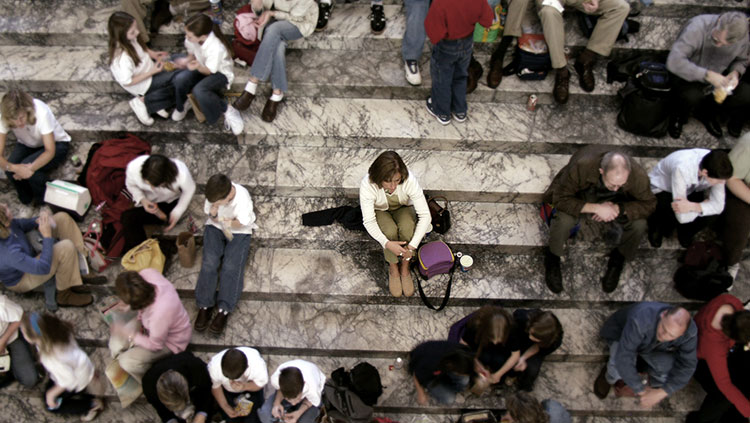
Everyone experiences loneliness at some point. But if a person can’t soothe this emotion by connecting with others, it can take a toll on their health, especially when that feeling of disconnection becomes chronic. Loneliness doesn’t necessarily correlate to the number of friends someone has or how they spend their time. Instead, experts define it as a kind of emotional warning sign indicating unfulfilled social needs.
“Loneliness is the gap between the closeness we desire and the closeness we perceive we have with other people,” said Isabelle Lanser, a clinical psychologist and co-founder of Cypress Mental Health in Beverly Hills, Calif.
More than one in five people around the globe say they’ve recently felt lonely, according to a July 2024 Gallup survey. Officials in several countries have sounded the alarm on the harms associated with loneliness, and researchers are studying how this feeling presents in the brain to help people who struggle with it.
In his 2023 advisory on the subject, U.S. Surgeon General Vivek Murthy noted the premature mortality risk linked to social disconnection is akin to smoking up to 15 cigarettes daily. He also pointed to the benefits people can enjoy when they do feel connected to each other, like a greater sense of personal wellbeing and ties to stronger, more resilient communities.
Unlike social isolation, which happens when people lack contact with others, loneliness is a self-reported state of mind. It has more to do with how they feel about their own social lives than the objective fact of how many people they see each day. There’s no one-size-fits-all solution, but experts say tackling loneliness requires both personal and collective action.
“The fact that social connection is linked to survival [means] it's one of the most fundamental motives we have.”
— Julianne Holt-Lunstad
“There’s probably more than one way to get to feeling lonely,” said Anna Finley, assistant professor of psychology at North Dakota State University. “So then, you would assume there's more than one way to become more socially connected.”
Models of Loneliness
Humans are wired to socialize. Our early ancestors ensured their access to food, safety, and other necessities by collaborating with each other.
“The fact that social connection is linked to survival [means] it's one of the most fundamental motives we have,” said Julianne Holt-Lunstad, professor of psychology and neuroscience at Brigham Young University and lead science editor on the surgeon general’s 2023 advisory.
In the short term, feeling lonely prompts people to reconnect socially, much like hunger or thirst encourages us to meet specific needs, Holt-Lunstad added. But when loneliness lingers, it can start to cause problems.
In a socially connected brain, reward centers like the nucleus accumbens are activated, and stress regions like the amygdala and paraventricular nucleus are dampened while interacting with others, explained Erika Vitale, postdoctoral researcher at the University of Kansas School of Pharmacy. She said this dynamic helps motivate people to engage with each other. People experiencing intense loneliness still have that drive to connect, she added, but they can feel more hesitant or uncertain about the prospect of following through on that desire.
Researchers have found links between loneliness and differences in structure and function across several brain regions. In a 2022 review article, Finley wrote “loneliness appears to disrupt neural activity related to social behavior and cognitive control.” She and her co-author reviewed research on loneliness and social isolation involving humans or animals.
Studies monitoring brain activity found people who felt lonely were quick to spot negative social words and images, and had less fMRI activity in their ventral striatum — a neural structure involved with reward and motivation — when they observed “positive social images of strangers,” Finley wrote.
Another paper in the review linked loneliness to greater activity in the ventral attention network and other neural systems that take in information from the outside world. Some researchers hypothesize differences in task-related connectivity across several brain regions could indicate people who feel lonely may dwell on people’s behaviors or intentions more, or be hypervigilant toward perceived external threats, but Finley’s review points out this potential association hasn’t yet been confirmed.
Finley, who was previously a postdoctoral researcher at the University of Wisconsin-Madison's Midlife in the United States (MIDUS) project, said researchers use several non-invasive techniques to study loneliness in humans, including EEG, MRI, and fMRI. However, others employ animal models to answer their questions, which requires them to use social isolation as a proxy for loneliness, since animals can’t tell us whether they feel lonely.
“There is a strong literature that animals housed in isolation don't do well, and humans don't do well either.”
— Holt-Lunstad
Animals involved in this research, like primates and rodents, differ from humans in important ways. Their brains and social structures don’t directly map onto our own, Finley noted. But despite their intrinsic limitations, she said animal studies still matter because they allow researchers to conduct invasive testing in more controlled environments.
Vitale’s research involves prairie voles, a type of rodent that forms “pair bonds” with an opposite-sex mate. She and her colleagues use fiber optic implants in the animals’ brains to monitor neural activity, plus dopamine sensors to track when the chemical is released.
Neurotransmitters play a key role in helping people connect with others — Vitale indicated in her 2022 review that dopamine and endorphins promote social-seeking behaviors. Researchers can track chemicals like dopamine in human brains, but she said studies in animals help fill important knowledge gaps. Both research types are crucial because understanding the relationship between neurochemicals and loneliness could help inform medication or treatment plans aimed at treating loneliness and helping people overcome it, Vitale added.
A wide range of evidence has helped reveal the psychological and physical toll isolation can take on social creatures, too.
“There is a strong literature that animals housed in isolation don't do well, and humans don't do well either,” said Holt-Lunstad.
Paths to Connection
Around one in three adults in the United States say they feel lonely. A range of sociocultural shifts may contribute to that figure — far more people live alone today, for example, compared to the past.
People have options when it comes to addressing their own feelings of loneliness, but solutions look different for everyone. Those who have felt lonely for a long time may face unique hurdles to reconnecting with others. Researchers don’t yet know where the tipping point between acute and chronic loneliness lies, but this threshold has implications for mental health.
Extended periods of loneliness can predispose people to depressive episodes, and those feelings can in turn fuel each other, Finley explained. People who feel lonely also tend to interpret neutral or ambiguous social signals as negative, she added, which can prompt them to withdraw further. That’s why the solution isn’t always as simple as spending more time with others.
“If you don't address some of these social-emotional changes that are happening in chronic loneliness, then just having people be sociable isn't going to fix the problem for most folks,” Finley said.
When Lanser addresses loneliness with her patients, she said she often starts by encouraging behaviors aimed at contradicting thought patterns that perpetuate those feelings. She emphasizes the importance of strengthening existing social ties, because people who are lonely often crave a deeper connection which can be hard — though not impossible — to find with strangers.
Lanser’s research has found prosocial behavior — specifically, writing a thank-you note for or giving a gift to someone they’re close to — helped reduce feelings of loneliness and improved moods among people who were assigned those tasks.
“Usually if we can have somebody start having the experiences that all their thoughts are telling them they can't have, that's pretty strong evidence against those thoughts, and it makes it easier to challenge those cognitions and build that psychological flexibility,” Lanser said.
“… just having people be sociable isn't going to fix the problem for most folks.”
— Anna Finley
Although anyone can feel lonely, social factors contribute to individual risk. Young adults, older adults, people who have low incomes, identify as LGBTQ+, have mental or physical health challenges, and others who experience marginalization or discrimination face a higher risk of loneliness, according to the Centers for Disease Control and Prevention.
In the case of people who are marginalized due to one or more of their identities, Holt-Lunstad emphasized this risk is rooted in the broader social barriers and stigmas they may encounter in life, not the identities themselves. But there’s limited information on viable, large-scale solutions to loneliness.
Lots of studies focus on interventions aimed at alleviating lonely feelings among individuals, rather than addressing its root causes or potential actions at the community or society level, Holt-Lunstad said. She co-authored a systematic review on the subject.
It takes more time and money to study if building a new neighborhood park helps residents feel more connected to each other over time, for example, compared to more readily accessible tasks like Lanser’s letter-writing exercise. But addressing loneliness is a collective effort requiring action on multiple scales — Holt-Lunstad said the surgeon general’s advisory has suggestions for every “individual, organization and entity” to make a difference in their sphere of influence.
She also pointed out that loneliness is a continuum, not a binary. Rather than simply feeling lonely or not lonely, many people may feel fulfilled in some aspects of their social lives but not others. Working toward identifying and overcoming obstacles to social connection is a good goal, she said, with the caveat that some external factors — like work schedules — can be difficult to change.
“Oftentimes, the barriers to connection are outside an individual’s control,” Holt-Lunstad said. “So, I don't want people to put too much burden or blame on themselves.”
There's no quick fix for loneliness, but there are solutions for people who want to work toward feeling more socially connected. Reaching out to loved ones, getting involved in your community, utilizing services like the Crisis Text Line (which offers information and support tailored to loneliness), or seeking the advice of a mental health professional are just some of many potential routes.
Identifying accessible actions that work with the demands of daily life is a first step on the path to connecting more deeply with other people, and helping ourselves and others feel less lonely.
CONTENT PROVIDED BY
BrainFacts/SfN
References
Finley AJ, Schaefer SM. (2022) Affective Neuroscience of Loneliness: Potential Mechanisms underlying the Association between Perceived Social Isolation, Health, and Well-Being. J Psychiatr Brain Sci. https://doi.org/10.20900/jpbs.20220011
Lam, J.A., Murray, E.R., Yu, K.E. et al. Neurobiology of loneliness: a systematic review. Neuropsychopharmacol. 46, 1873–1887 (2021). https://doi.org/10.1038/s41386-021-01058-7
Lanser, I., & Eisenberger, N. I. (2023). Prosocial behavior reliably reduces loneliness: An investigation across two studies. Emotion, 23(6), 1781–1790. https://doi.org/10.1037/emo0001179
Our Epidemic of Loneliness and Isolation: The U.S. Surgeon General’s Advisory on the Healing Effects of Social Connection and Community. (2023). https://www.hhs.gov/sites/default/files/surgeon-general-social-connection-advisory.pdf
Vitale, Erika M., Smith, Adam S. (2022) Neurobiology of Loneliness, Isolation, and Loss: Integrating Human and Animal Perspectives. Frontiers in Behavioral Neuroscience. https://doi.org/10.3389/fnbeh.2022.846315
Welch, V. et al. (2024). In‐person interventions to reduce social isolation and loneliness: An evidence and gap map. Campbell Systematic Reviews, 20(2). https://onlinelibrary.wiley.com/doi/10.1002/cl2.1408
What to Read Next
Also In Mental Health
Trending
Popular articles on BrainFacts.org


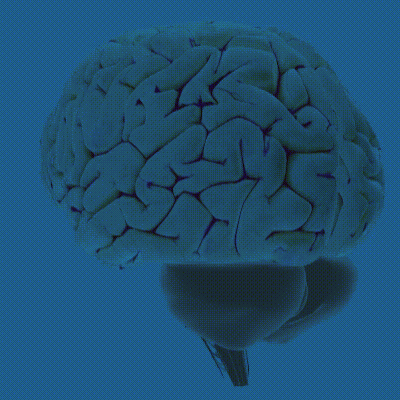
.jpg)
